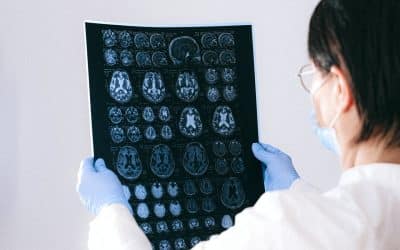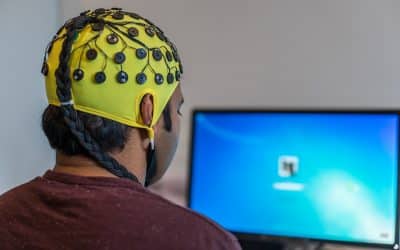To determine whether hyperbaric oxygen (HBO2) therapy should be used for the treatment of autism spectrum disorders (ASD). A literature search was performed on PubMed, Cochrane Library and DynaMed for studies evaluating the use of HBO2 for ASD treatment. The studies were then reviewed for the highest quality evidence. The evidence is weak for the use of HBO2 in ASD, with only one, likely flawed, randomized control study showing treatment benefit. HBO2 should not be recommended for ASD treatment until more conclusive favorable results and long-term outcomes are demonstrated from well-designed controlled trials.
Autism
Hyperbaric Oxygen Therapy (HBOT) Research for Autism Spectrum Disorder.
[Research advances in the management of autism spectrum disorders in children].
Autism spectrum disorders (ASD) are a group of developmental dysfuntion of nervous system characterized by social interaction and communication disorders, restricted interests and repetitive stereotyped behaviors. The incidence of ASD has been increasing through the world. Some studies have shown that early reasonable individualized comprehensive intervention can obviously improve the prognosis of children with ASD. The etiology of ASD is unclear now, and behavioral and developmental intervention is the main therapy for ASD. The reasonable application of some drugs can improve the efficacy of the behavioral intervention for concomitant symptoms in ASD.
Integrative Approaches to Caring for Children with Autism.
Parents commonly integrate complementary and alternative medical (CAM) treatments for autism spectrum disorder (ASD) with conventional care. The aims of this article are to (1) describe the most commonly used treatments, (2) assess their efficacy and safety, and (3) organize the information in practical format for practitioners. We organized treatment modalities into four categories: recommended, monitored, tolerated, and therapies that should be avoided. These four categories are based on a two by two table weighing a therapy׳s effectiveness and safety. To meet the threshold for “recommended,” its effectiveness needed to be supported by two or more randomized, controlled trials. In addition to promoting an overall healthy lifestyle via nutrition, exercise, sleep, stress management, social support, and avoiding neurotoxins (healthy habits in a healthy habitat),
Study the effect of hyperbaric oxygen therapy in Egyptian autistic children: a clinical trial
Numerous studies of autistic individuals have revealed evidence of cerebral hypoperfusion, neuroinflammation, gastrointestinal inflammation, immune dysregulation, oxidative stress, relative mitochondrial dysfunction, and neurotransmitter abnormalities. Many of these findings have been correlated with core autistic symptoms. For example, cerebral hypoperfusion in autistic children has been correlated with repetitive, self-stimulatory and stereotypical behaviors, and impairments in communication. Specifically, hyperbaric oxygen therapy (HBOT) has been used and can compensate for decreased blood flow by increasing the oxygen content of plasma and body tissues. The aim of this work was to study the effect of hyperbaric oxygen therapy in autistic Egyptian children. HBOT is a treatment that has recently become quite popular in the autism spectrum disorder (ASD) community. Its benefits cross a wide range of autistic traits as: improved language, increased awareness, behavior and socialization by affecting the pathophysiological findings in autism.
Evidence linking oxidative stress, mitochondrial dysfunction, and inflammation in the brain of individuals with autism
Abstract Autism spectrum disorders (ASDs) are a heterogeneous group of neurodevelopmental disorders that are defined solely on the basis of behavioral observations. Therefore, ASD has traditionally been framed as a behavioral disorder. However, evidence is...
The clinician’s guide to autism.
On the basis of the most recent epidemiologic research, Autism Spectrum Disorder (ASD) affects approximately 1% to 2% of all children. (1)(2) On the basis of some research evidence and consensus, the Modified Checklist for Autism in Toddlers isa helpful tool to screen for autism in children between ages 16 and 30 months. (11) The Diagnostic Statistical Manual of Mental Disorders, Fourth Edition, changes to a 2-symptom category from a 3-symptom category in the Diagnostic Statistical Manual of Mental Disorders, Fifth Edition(DSM-5): deficits in social communication and social interaction are combined with repetitive and restrictive behaviors, and more criteria are required per category. The DSM-5 subsumes all the previous diagnoses of autism (classic autism, Asperger syndrome, and pervasive developmental disorder not otherwise specified) into just ASDs.
Resting state EEG abnormalities in autism spectrum disorders
Abstract Autism spectrum disorders (ASD) are a group of complex and heterogeneous developmental disorders involving multiple neural system dysfunctions. In an effort to understand neurophysiological substrates, identify etiopathophysiologically distinct subgroups of...
Excitotoxicity in the pathogenesis of autism
Abstract Autism is a debilitating neurodevelopment disorder characterised by stereotyped interests and behaviours, and abnormalities in verbal and non-verbal communication. It is a multifactorial disorder resulting from interactions between genetic, environmental and...
Complementary and alternative medicine for autism spectrum disorders: rationale, safety and efficacy.
Abstract: Complementary and alternative medicine is widely used for children with autism spectrum disorder, despite uncertainty regarding efficacy. This review describes complementary and alternative practices commonly used among this population, the rationale for the...



